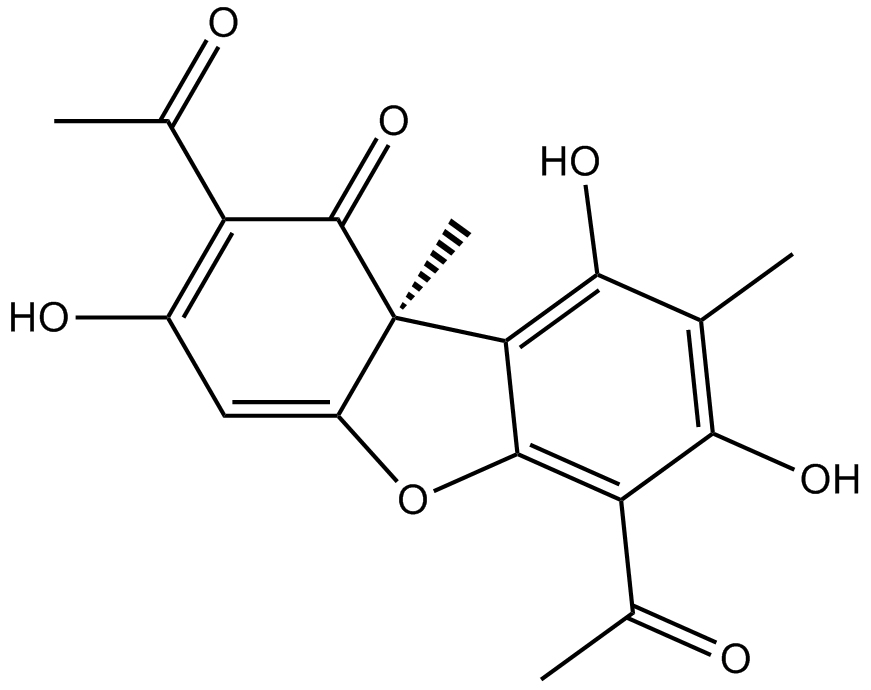(+)-Usniacin |
| Katalog-Nr.GC17330 |
(+)-Usniacin wird aus Flechten isoliert, bindet an die ATP-Bindungstasche von mTOR und hemmt die AktivitÄt von mTORC1/2. (+)-Usniacin hemmt die Phosphorylierung von mTOR-Downstream-Effektoren: Akt (Ser473), 4EBP1, S6K, induziert Autophay, mit Anti-Krebs-AktivitÄt. (+)-Usniacin besitzt antimikrobielle AktivitÄt gegen eine Reihe von planktonischen grampositiven Bakterien, einschließlich Staphylococcus aureus, Enterococcus faecalis und Enterococcus faecium.
Products are for research use only. Not for human use. We do not sell to patients.

Cas No.: 7562-61-0
Sample solution is provided at 25 µL, 10mM.
MIC: 0.05 μg/62.5 μl to 3.1 μg/62.5 μl
Microorganisms can colonize a wide variety of medical devices, putting patients at risk for systemic and local infectious complications, including local-site infections, endocarditis, and catheter-related bloodstream infections. (+)-Usniacin is a secondary lichen metabolite that possesses antimicrobial activity against various planktonic gram-positive bacteria.
In vitro: (+)-Usniacin showed antimicrobial activity against the same microorganisms as that of acetone extract. Among the three analogues it was the most active one having quite low MIC values. Furthermore, (+)-Usniacin did not show any activity against A. hydrophila and B. cereus whereas (D)-usnic acid did. On the other hand, (+)-Usniacin was active against Y. enterocolitica whereas (D)-usnic acid was not active [1].
In vivo: No animal in-vivo study has been reproted so far.
Clinical trials: Trials carried out in volunteers showed that mouth-rinse with (+)-Usniacin preparations exerted a selective and long lasting action against S. mutans. The adherence of S. mutans to smooth surfaces was not increased by the presence of subinhibiting concentrations of (+)-Usniacin. These characteristics make (+)-Usniacin a suitable candidate for topical use in oral medicine [2].
References:
[1] Tay T, Türk AO, Yilmaz M, Türk H, Kivanç M. Evaluation of the antimicrobial activity of the acetone extract of the lichen Ramalina farinacea and its (+)-usnic acid, norstictic acid, and protocetraric acid constituents. Z Naturforsch C. 2004 May-Jun;59(5-6):384-8.
[2] Ghione M, Parrello D, Grasso L. Usnic acid revisited, its activity on oral flora. Chemioterapia. 1988 Oct;7(5):302-5.
Average Rating: 5 (Based on Reviews and 31 reference(s) in Google Scholar.)
GLPBIO products are for RESEARCH USE ONLY. Please make sure your review or question is research based.
Required fields are marked with *




















